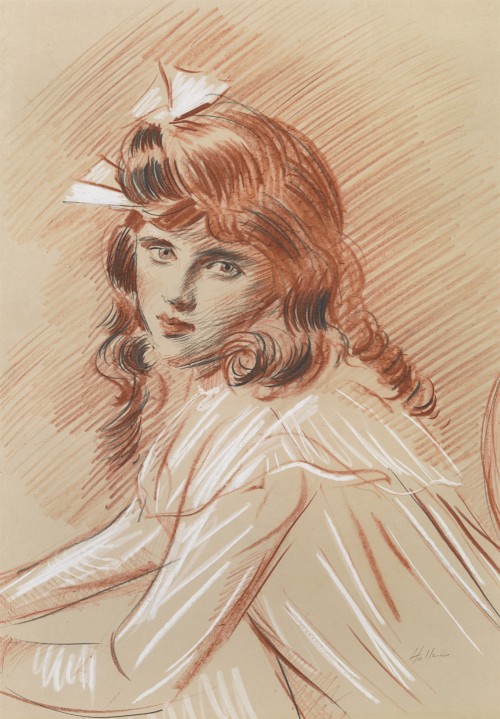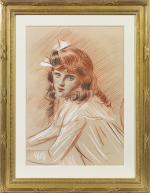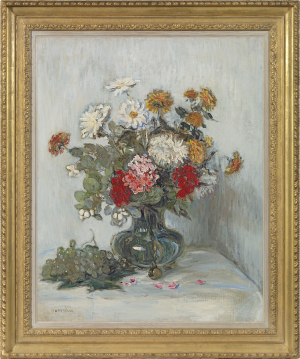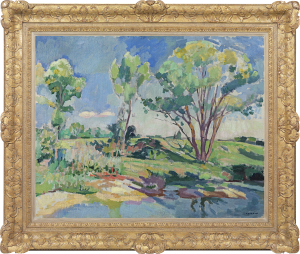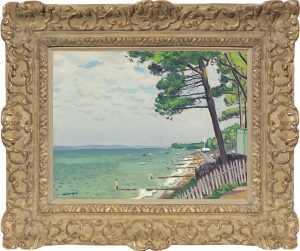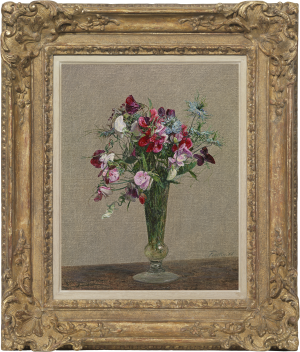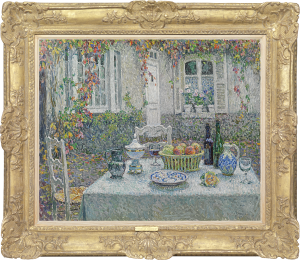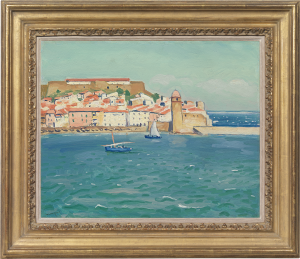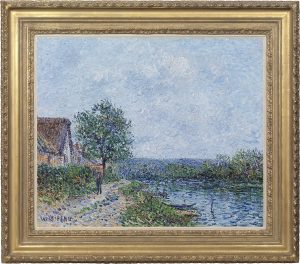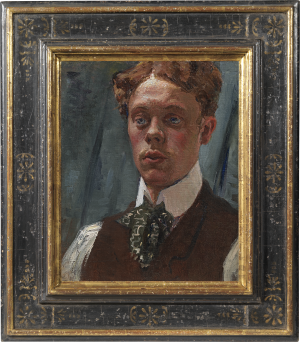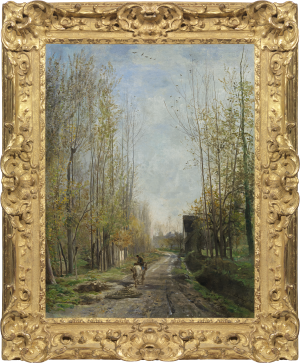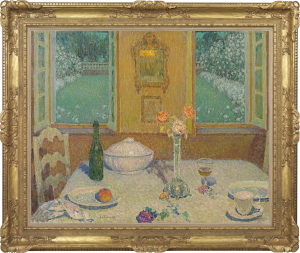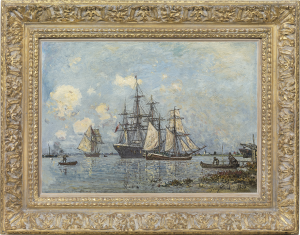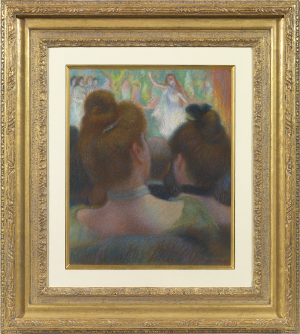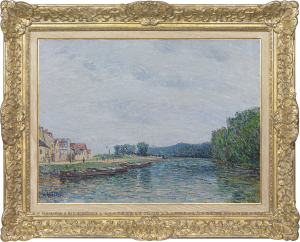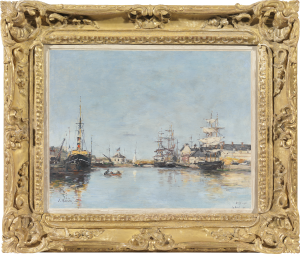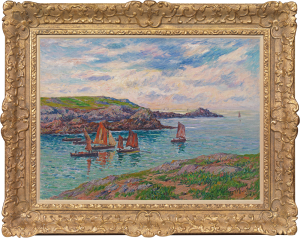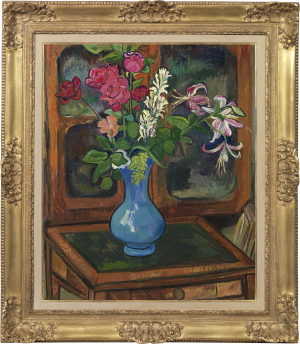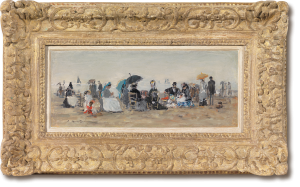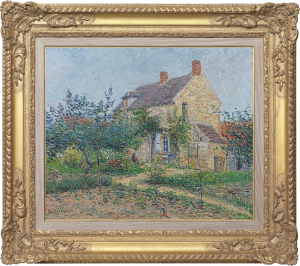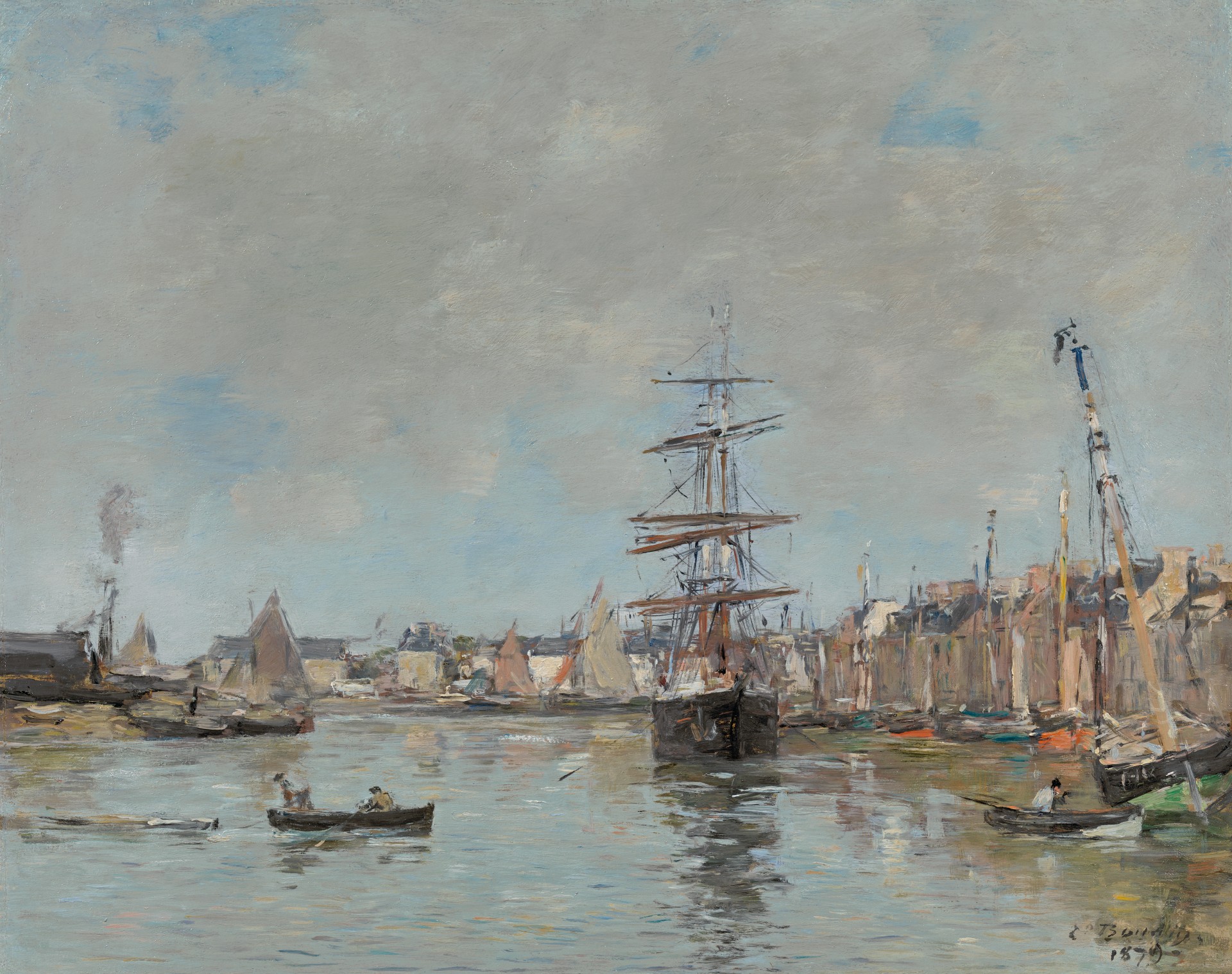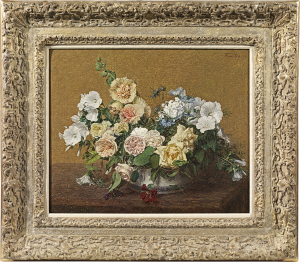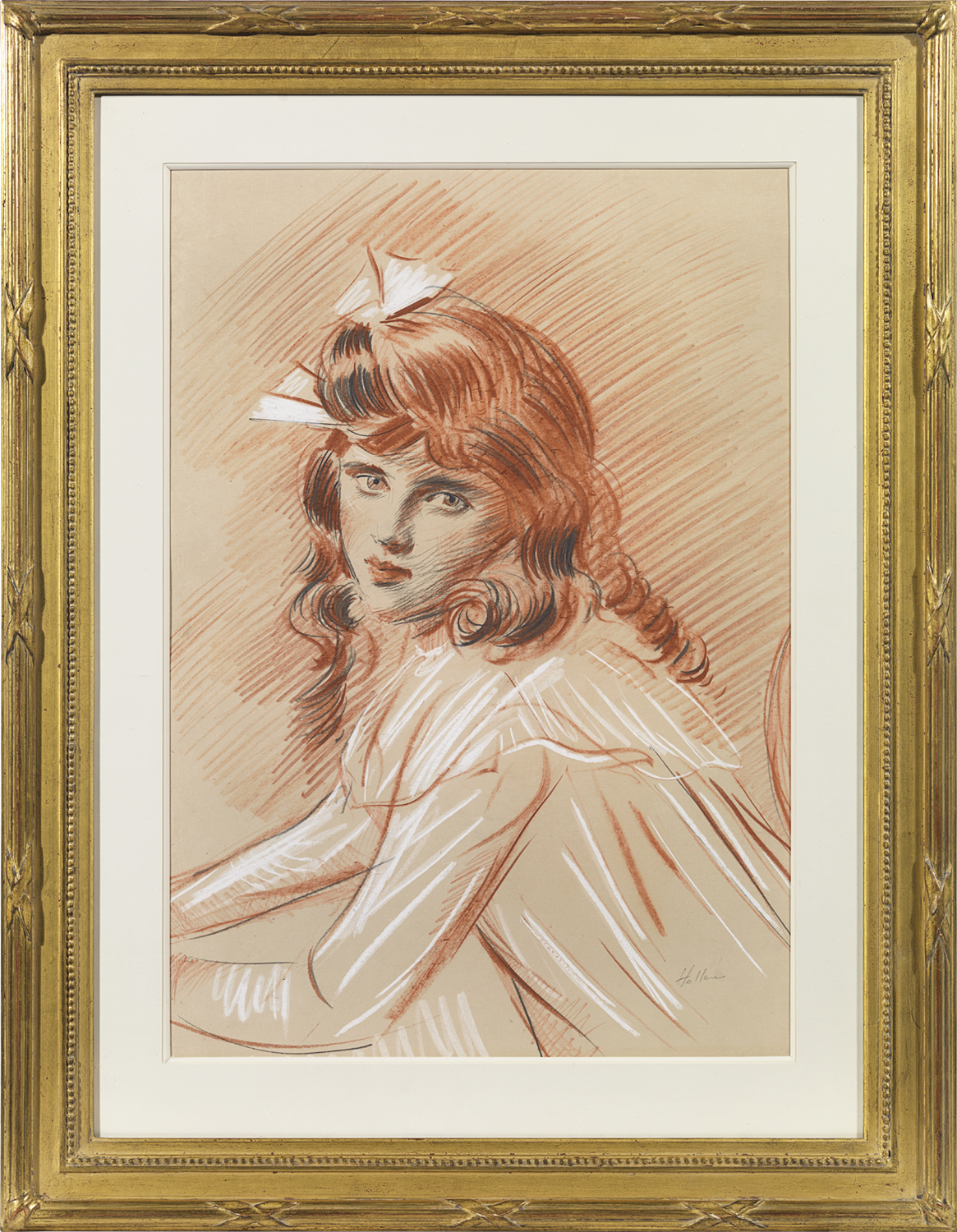Paul-Cesar Helleu
Portrait d'Ellen au ruban blanc
Sanguine, black and white chalks: 22 x 15.5 (in) / 55.9 x 39.4 (cm)
Signed lower right: Helleu
This artwork is for sale.
Please contact us on: +44 (0)20 7493 3939.
Email us
PAUL-CESAR HELLEU
Vannes 1859 - 1927 Paris
Ref: SP 5524
Portrait d'Ellen au ruban blanc
Signed lower right: Helleu
Sanguine, black and white chalks: 22 x 15 ½ in / 55.9 x 39.4 cm
Frame size: 30 ¼ x 23 ½ in / 76.8 x 59.7 cm
Executed circa 1897
In a Louis XV style gilded composition drawing frame
Provenance
Private collection, Europe
To be included in the catalogue raisonné of the work of Paul-César Helleu being prepared by l’Association des Amis de Paul-César Helleu, inventory no.DE-2648
Paul-César Helleu’s elegant, red-haired wife Alice, whom he married in 1886, was his muse and chief model. Ellen, the first of their four children, was born on 4th September 1887. Helleu adored his children and frequently used them as models. He portrayed Ellen from her baby years until she had grown into a young woman as beautiful as her mother. In 1911 Ellen married Emile Orosdi, son of the businessman and Impressionist collector Léon Orosdi. Emile made his fortune developing the cosmetics firm Bourjois.
Pastels by Helleu of Ellen as a toddler show that she had dark hair and striking, pale blue eyes. Here he uses the technique of trois crayons - sanguine, black and white chalk – made famous by Jean-Antoine Watteau (1684-1721), the most celebrated French draughtsman of the eighteenth century. Helleu was deeply influenced by the ancien règime and furnished his house in neo-rococo style. A brilliant draughtsman himself, Helleu uses rapid but varied line to suggest the softness of the child’s skin and the glossy curls of her hair. As the light strikes it, Ellen’s dark hair takes on a coppery tone, the glorious colour of her mother’s hair which held Helleu in thrall all his life. The dazzling white bow in her hair and her white dress with its frilly ‘Pierrot’ collar give her an air of innocence and tie her more closely to Watteau’s poetic Commedia dell’arte figures. Another trois crayons drawing of Ellen, wearing the same dress, is in the Art Institute of Chicago.
Paul Helleu, Mademoiselle Ellen Helleu, c.1897. Art Institute of Chicago.
PAUL-CÉSAR HELLEU
Vannes 1859 - 1927 Paris
Paul César Helleu was a painter and engraver whose work epitomises the charm and elegance of France in the Belle Epoque. His portraits of his wife, Alice, are considered to be amongst his most sensitive works. However, it was his commissioned portraits of society ladies that brought him fame and fortune.
Helleu was born in Vannes on the Breton coast in 1859. In 1870 he moved to Paris to study at the Ecole des Beaux-Arts with Jean-Léon Gérôme; his circle of friends included John Singer Sargent (who bought one of his earliest works), Degas, Whistler, Alfred Stevens and Giovanni Boldini. Impoverished as a student, for a decade Helleu supplemented his finances by decorating plates for the potter Joseph-Théodore Deck. In 1876 Helleu and Sargent visited the Second Impressionist Exhibition, which was to have a profound effect on their artistic careers. Helleu was greatly impressed by this new group of artists and was accepted as one of them. In 1886 he was invited by Degas to exhibit in the eighth exhibition, but declined because of the advice of Monet and his dislike of Gauguin’s work.
Helleu’s reputation was established when he exhibited several large pastels at the Salons of 1885 and 1886, including Woman with a fan (Salon 1886; Institute of Arts, Minneapolis, MN). Jacques-Emile Blanche declared that never before had an unknown artist received such a rapturous reception. In 1885 Helleu visited London with Gérôme to paint a panorama (untraced). He became an Anglophile and thenceforth visited England almost every year.
The following year Helleu married Alice Guérin, with whom he had fallen in love two years previously, when she was only fourteen. The graceful, red-haired Alice became his chief muse and model. Helleu’s paintings and drypoints of Alice and their lovely children, executed with a sinuous lightness of line, are among his most celebrated works. Helleu became a master of the difficult drypoint medium, executing many portraits of society beauties. In 1887 Helleu met Comte Robert de Montesquiou, the inspiration for the decadent Baron de Charlus in Proust’s A la Recherche du Temps Perdu. Montesquiou became an important patron and Helleu also painted several portraits of de Montesquiou’s cousin, Mme de Greffulhe (Proust’s Duchesse de Guermantes). Helleu himself features in Proust’s magnum opus as the painter Elstir.
Helleu’s financial success as a society portraitist allowed him to indulge a love of yachting which he had inherited from his father. He spent his summers at Deauville and Cowes, mixing with both French and English high society. Alice enjoyed entertaining on their boat L’Etoile and Helleu painted many canvases of life on board and harbour scenes.
Helleu visited America in 1902, 1912 and 1920, portraying famous American ladies such as Helena Rubenstein (drypoint) and the flamboyant Director of the Pierpont Morgan Library, Belle da Costa Greene (coloured chalk drawing; Pierpont Morgan Library, New York). In 1912 he painted the signs of the zodiac on the ceiling of Grand Central Station. Paul-César Helleu died in Paris on 23rd March 1927.
The work of Paul-César Helleu is represented in the Musée D’Orsay, Paris; the Louvre, Paris; the Hermitage, St Petersburg; Tate, London and the Metropolitan Museum of Art, New York.

